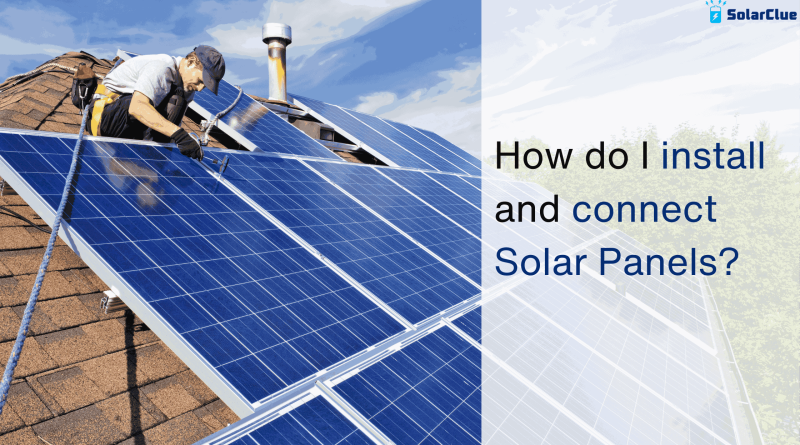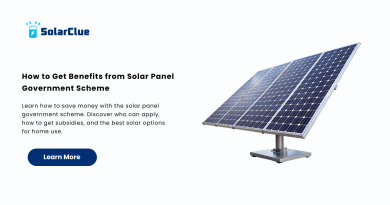Step-by-Step Solar Panel Installation Guide
Installing solar panels is an excellent way to harness the power of the sun and reduce your reliance on non-renewable energy sources. By converting sunlight into electricity, solar panels can provide clean and sustainable energy for your home or business. This blog will guide you through the process of installing and connecting solar panels, allowing you to take advantage of the numerous benefits they offer.
Table of Contents
Assessing Your Property
Before diving into the installation process, it is essential to assess your property to determine if solar panels are a viable option. Start by examining the amount of sunlight your property receives throughout the day, as shading can significantly impact the efficiency of your solar panels. Ideally, you want your panels to be in an area that receives direct sunlight for the majority of the day.
Additionally, consider the available space on your property for installing the panels. Rooftop installations are common, but ground-mounted systems may be more suitable if your roof does not receive adequate sunlight or has space constraints. Assessing your property will help you make an informed decision and optimize the efficiency of your solar panel installation.
Finding a Solar Panel Installer
Once you have determined that your property is suitable for solar panel installation, it is time to find a reputable solar panel installer. Look for companies with a proven track record, experience in the industry, and positive customer reviews. A professional installer will guide you through the entire process, including assessing your property, selecting the right panels, and obtaining the necessary permits.
You can also reach out to local government agencies or organizations specializing in renewable energy to connect with certified installers. These organizations often have a database of trusted professionals who can ensure a seamless installation.
Obtaining Necessary Permits
Before you can begin installing solar panels, it is crucial to obtain the necessary permits and approvals from your local government. Contact your city or county building department to determine the specific requirements for solar panel installations in your area. They will provide you with the necessary applications, fees, and information on any inspections that may need to be conducted during or after the installation.
Working with a reputable solar panel installer is beneficial in this regard, as they will be familiar with the local permitting process and can assist you in obtaining the required documents. Adhering to all the permit requirements ensures that your installation is safe, compliant, and eligible for any financial incentives available in your region.
Preparing for Installation
Before the installation begins, there are a few key preparatory steps to ensure a smooth process. First, trim any overhanging tree branches or remove any other obstructions that could cast shade on your panels. This will maximize sun exposure and optimize the performance of your solar system.
Next, inspect your roof (if you’re opting for a rooftop installation) to ensure it is in good condition and free from any leaks or damages. Any necessary repairs or maintenance should be carried out before the panels are installed. It’s also essential to have a clear understanding of your electricity consumption patterns to determine the number of panels required to meet your energy needs adequately.
Mounting the Solar Panels
The mounting process is a critical step in installing solar panels. Depending on the type and design of your solar panel system, there are a few common mounting options to consider. The most prevalent method is through roof mounting, where panels are attached to the existing roofing structure using rails and brackets. This option is popular as it utilizes the available space efficiently.
Another mounting option is ground-mounted systems. These are set up on the ground and allow for adjustment of the panel angles to maximize energy generation. Ground-mounted systems are ideal for properties with ample space and minimal shading obstacles.
Regardless of the mounting method, it is crucial to follow the manufacturer’s instructions and consult with your installer to ensure the panels are securely fastened and positioned correctly for optimal solar exposure.
Connecting the Solar Panels
Once the panels are mounted, connecting them is the next step. This involves properly wiring the panels together and connecting them to an inverter. The inverter is responsible for converting the direct current (DC) electricity generated by the panels into usable alternating current (AC) electricity that can power your home.
The wiring process requires precision and caution, as any mistakes can affect the efficiency and safety of your solar system. Your solar panel installer will follow industry best practices, including using appropriate wire sizes, proper conduit installations, and ensuring all connections are securely tightened. They will also connect the solar system to your main electrical panel, ensuring seamless integration with your existing electrical infrastructure.
Conclusion
Illuminate your solar installation journey with SolarClue®’s step-by-step guide. Begin with essential steps like site assessment, energy audit, and feasibility analysis for an informed start. Optimize system sizing through energy consumption analysis and roof space evaluation. Navigate permits and approvals seamlessly with guidance on necessary paperwork and compliance requirements. Choose a reputable installer with our tips on certifications and customer reviews. Maximize energy production by optimizing panel placement and orientation. Understand the entire setup with insights into components and considerations. Overcome challenges with practical solutions for a smooth experience. Ensure safety and integration with our guidance on electrical work. Sustain long-term efficiency with maintenance tips and ongoing support, keeping homeowners informed about energy production, issue resolution, and future upgrades.
Frequently Asked Questions
SolarClue® provides a detailed guide on preliminary steps for solar panel installation, covering site assessment, energy audit, and feasibility analysis. We ensure homeowners have an informed start to their solar journey by understanding their energy needs and assessing the feasibility of solar installation.
SolarClue® assists homeowners in determining the optimal size for their solar panel system. We offer insights into energy consumption analysis, roof space evaluation, and considerations for future energy needs, ensuring a well-sized and efficient solar installation.
SolarClue® elaborates on the significance of permits and approvals in the solar panel installation process. We guide homeowners through the necessary paperwork, local regulations, and compliance requirements, ensuring a seamless and compliant installation experience.
SolarClue® advises homeowners in selecting a reputable solar installer. We provide tips on researching, checking certifications, and reading customer reviews, ensuring homeowners choose a qualified and reliable team for a successful solar panel installation.
SolarClue® offers considerations on the placement and orientation of solar panels. We guide homeowners on optimizing sunlight exposure and addressing potential shading issues, ensuring maximum energy production and efficiency from their solar installation.
SolarClue® educates homeowners on the different components of a solar panel installation. We explain the role of inverters, mounting systems, wiring, and monitoring equipment, providing a comprehensive understanding of the entire system setup.
SolarClue® addresses common concerns or challenges homeowners may face during the installation process. We offer practical solutions and tips to ensure a smooth and stress-free experience, guiding homeowners through potential hurdles.
SolarClue® assists homeowners in understanding the electrical work involved in connecting solar panels. We ensure safety compliance and proper integration with the existing electrical setup, fostering a secure and efficient connection to the grid or an off-grid system.
SolarClue® guides homeowners on routine maintenance for solar panels. We offer tips on cleaning, monitoring, and troubleshooting, ensuring long-term efficiency and performance of the solar installation, empowering homeowners to take proactive measures.
SolarClue® provides ongoing support to homeowners post-installation. We offer resources for monitoring energy production, addressing issues, and staying informed about technological advancements. This ensures homeowners are equipped for future upgrades and maintaining a seamless solar experience.




